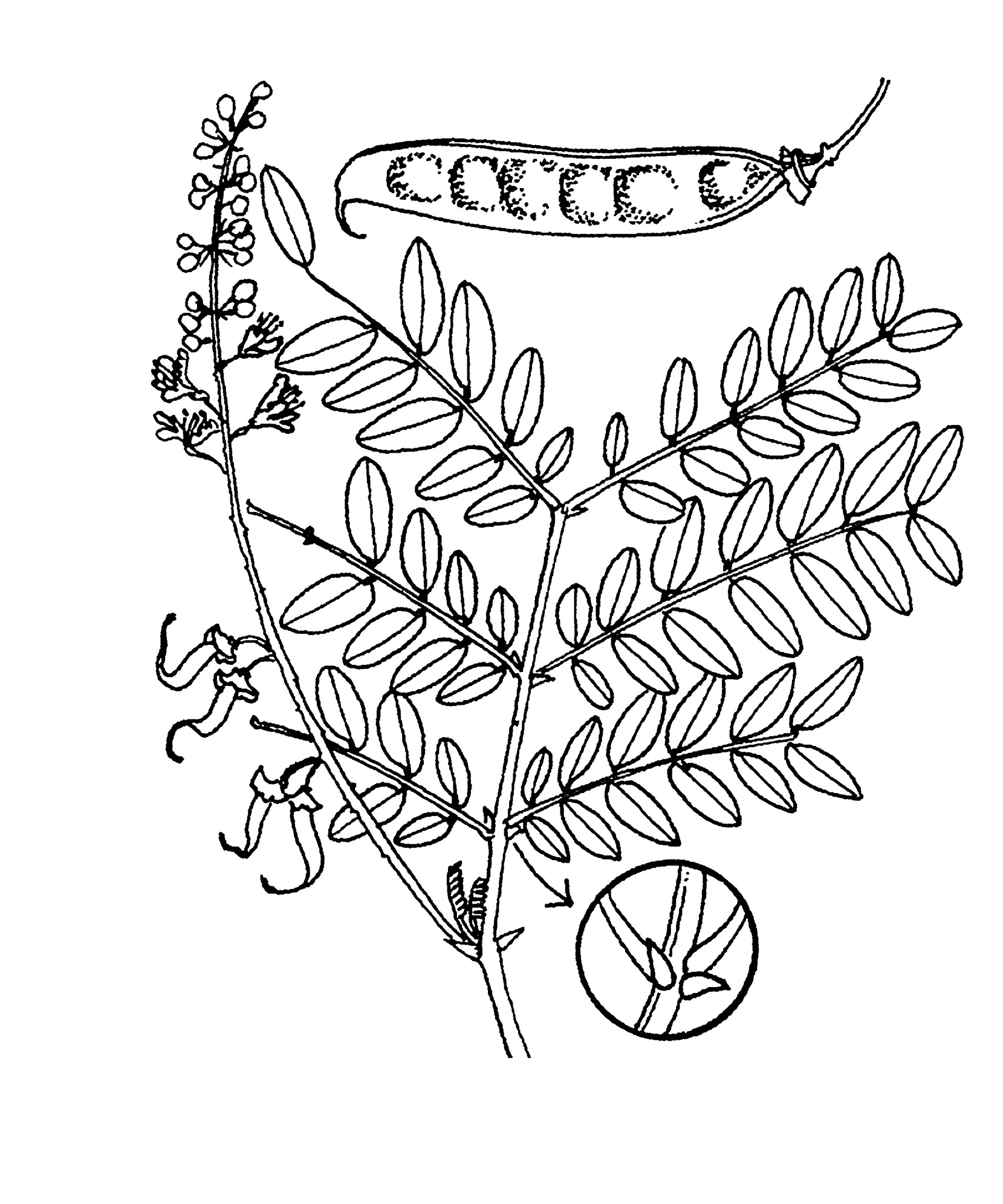
Commemorating Andrea Caesalpino (1519–1603), Professor of Botany, Padua, Italy, and physician to Pope Clement VIII.
Trees, shrubs or climbers, usually with prickles. Leaves bipinnate or reduced to scales; stipules small or leafy. Leaflets mostly opposite. Flower clusters terminal or axillary, sometimes branched, rarely solitary. Flowers mostly bisexual, red or yellow. Sepals 5. Petals 5. Stamens 10, free, filaments hairy, alternately long and short. Fruit pods variable, mostly flattened and hard.
Grown in warm-climate districts for the delicate foliage and attractive flowers.
Species occasionally grown include the following: C. ferrea Mart., Brazilian Ironwood, which is spineless and a useful street tree; C. gilliesii (Hook.) Benth., Bird of Paradise Shrub, from Argentina and Uruguay, a spineless shrub to 3 m tall with yellow petals and red stamens, naturalised in a few spots of inland Australia; and C. pulcherrima (L.) Swartz, Pride of Barbados, a slightly prickly shrub or small tree with petals usually red with yellow margins and stamens bright red, occasionally all pink or yellow.
About 100 species from the tropics; Australia has 10 species.
Pre-soaked seed.
Many species are used for timber or dyes and a few species have medicinal properties; the seeds are used for ornaments and the pods as a source of tannin.
Prickly shrubs with bipinnate leaves.
Hattink (1974), Lewis (1998).
Source: (2002). Caesalpiniaceae. In: . Horticultural Flora of South-eastern Australia. Volume 3. Flowering plants. Dicotyledons. Part 2. The identification of garden and cultivated plants. University of New South Wales Press.
